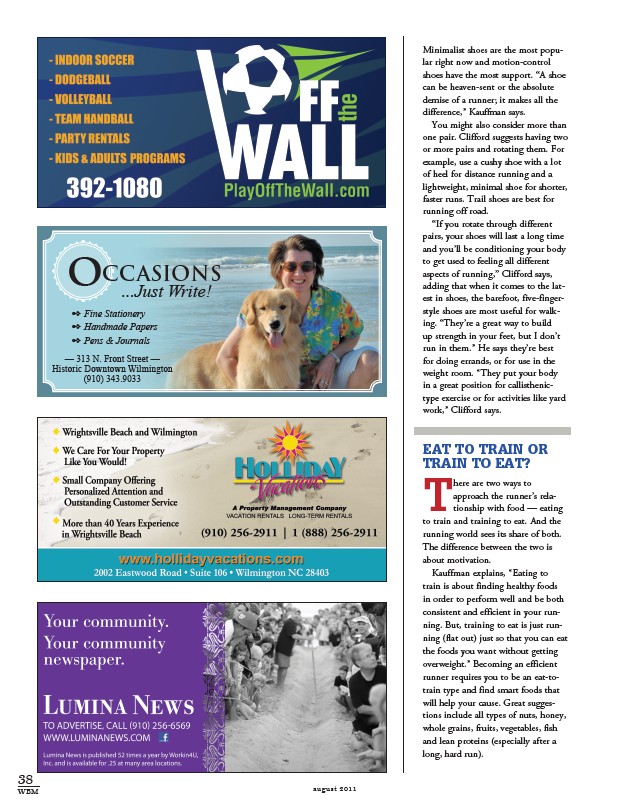
O
ccasions
...Just Write!
Fine Stationery
Handmade Papers
Pens & Journals
— 313 N. Front Street —
Historic Downtown Wilmington
(910) 343.9033
38
WBM august 2011
Minimalist shoes are the most popular
right now and motion-control
shoes have the most support. “A shoe
can be heaven-sent or the absolute
demise of a runner; it makes all the
difference,” Kauffman says.
You might also consider more than
one pair. Clifford suggests having two
or more pairs and rotating them. For
example, use a cushy shoe with a lot
of heel for distance running and a
lightweight, minimal shoe for shorter,
faster runs. Trail shoes are best for
running off road.
“If you rotate through different
pairs, your shoes will last a long time
and you’ll be conditioning your body
to get used to feeling all different
aspects of running,” Clifford says,
adding that when it comes to the latest
in shoes, the barefoot, five-fingerstyle
shoes are most useful for walking.
“They’re a great way to build
up strength in your feet, but I don’t
run in them.” He says they’re best
for doing errands, or for use in the
weight room. “They put your body
in a great position for callisthenictype
exercise or for activities like yard
work,” Clifford says.
Eat to Train or
Train to Eat?
There are two ways to
approach the runner’s relationship
with food — eating
to train and training to eat. And the
running world sees its share of both.
The difference between the two is
about motivation.
Kauffman explains, “Eating to
train is about finding healthy foods
in order to perform well and be both
consistent and efficient in your running.
But, training to eat is just running
(flat out) just so that you can eat
the foods you want without getting
overweight.” Becoming an efficient
runner requires you to be an eat-totrain
type and find smart foods that
will help your cause. Great suggestions
include all types of nuts, honey,
whole grains, fruits, vegetables, fish
and lean proteins (especially after a
long, hard run).